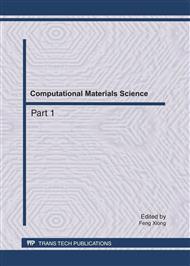p.1627
p.1633
p.1637
p.1641
p.1647
p.1653
p.1657
p.1663
p.1669
Research on Infrequent Features Extraction from Chinese Reviews
Abstract:
Now many customers browse a large number of online reviews to know others’ word-of-mouth about products and services prior to making their decisions. Meanwhile customer reviews serve as a feedback mechanism that can help suppliers improve their products and services, gaining competitive advantages. Specifically, product feature extractions from reviews are expected to further investigate the views and attitudes of customers. This study aims at analyzing Chinese customer reviews. Our approach was based on a recently introduced mining approach, and adding infrequent feature to the candidate features dataset by the algorithm proposed in this paper. Experiments were conducted using the reviews download from Internet as datasets. Empirical results proved that in Chinese reviews feature mining, it is not appropriate for add the infrequent features.
Info:
Periodical:
Pages:
1647-1652
Citation:
Online since:
July 2011
Keywords:
Price:
Сopyright:
© 2011 Trans Tech Publications Ltd. All Rights Reserved
Share:
Citation:


